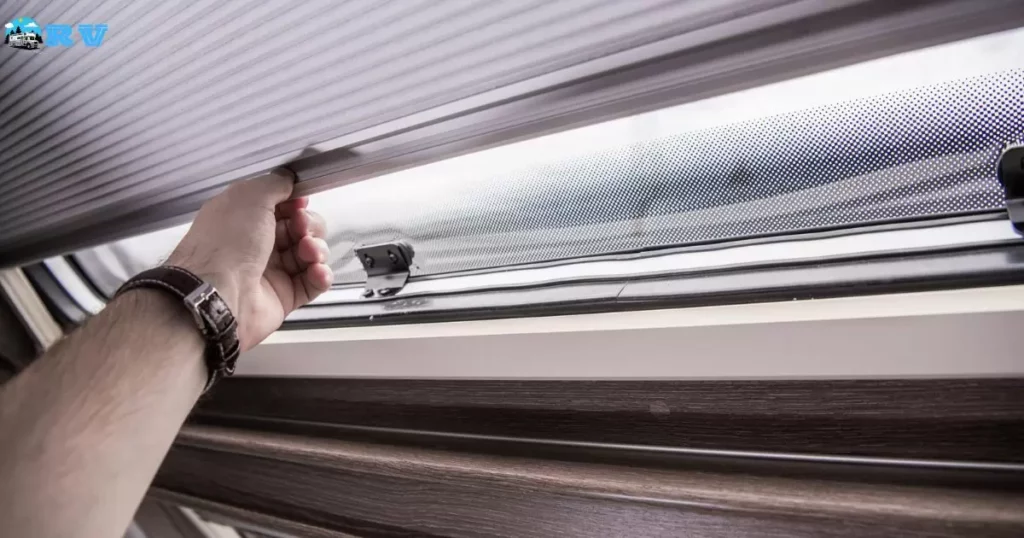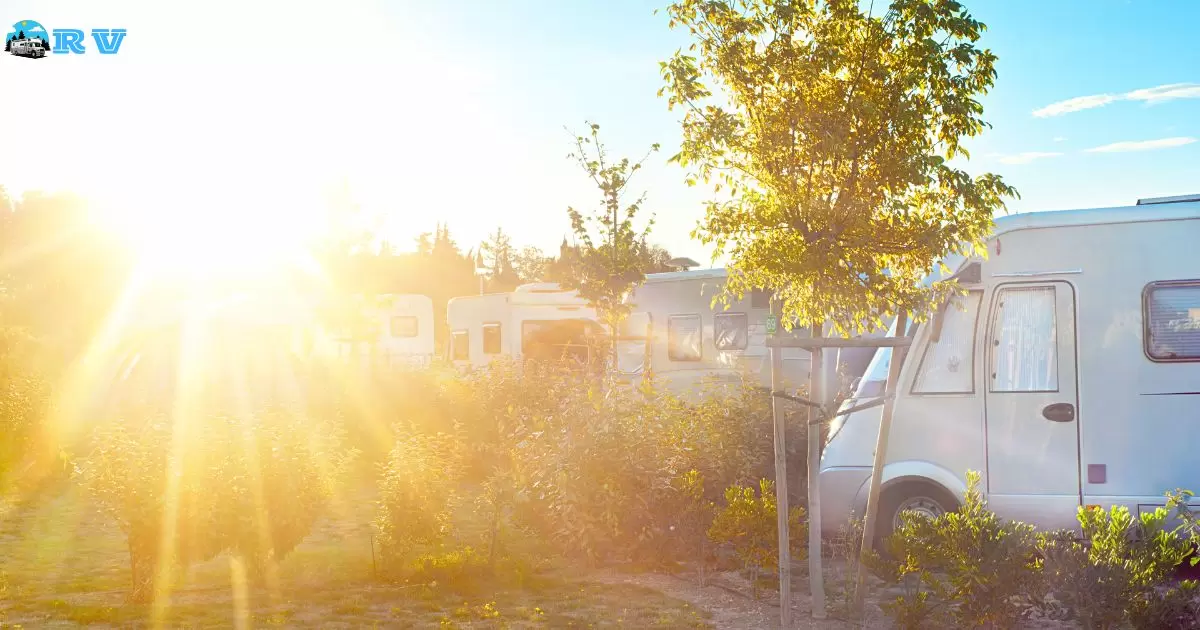Keeping an RV cool in extreme heat involves strategic methods to reduce internal temperatures. This can include using insulation, air conditioning, and shading techniques. The goal is to maintain a comfortable environment inside the RV despite the scorching temperatures outside.
Imagine you’re on a summer road trip in your RV, and the heat is relentless. You ask yourself, how to keep RV cool in extreme heat? This question is crucial for both comfort and safety. Read on to discover practical tips that can turn your RV into a cool oasis, even in the hottest weather.
In an RV, combating extreme heat requires more than just cranking up the air conditioner. Effective strategies include using reflective window covers, parking in shaded areas, and optimizing ventilation. Avoiding use of heat-generating appliances during peak heat times can significantly contribute to maintaining a cooler RV environment.
RV Insulation Techniques for Extreme Heat
Insulation is key in keeping an RV cool during extreme heat. The right insulation can effectively block the sun’s rays and keep the internal temperature down. Use materials like foam insulation or reflective foil, which are easy to install and very effective. This insulation should be applied to windows, doors, and even the roof of the RV.
Consider adding thermal curtains or insulated window coverings. These not only block sunlight but also help to retain cool air inside. Insulation doesn’t have to be expensive or complicated. Simple measures like using rugs or carpets can also provide additional insulation to the floor, helping to keep the overall temperature down.
Choosing the Right RV Air Conditioning System
Selecting the appropriate air conditioning system is crucial for your RV in extreme heat. The system should be powerful enough to cool the entire space but also energy-efficient. Look for air conditioners with a high energy efficiency rating (EER). These units use less power and are more effective in maintaining a cool environment.
Maintenance of the air conditioning system is equally important. Regularly cleaning the filters and ensuring the system is in good working order will enhance its efficiency. Don’t forget to check the seals around the unit. Proper sealing ensures that cool air doesn’t escape, keeping your RV cooler for longer periods.
RV Window Treatments for Heat Reduction

Window treatments are an essential aspect of keeping an RV cool. They not only add aesthetic value but also play a significant role in heat control. Use reflective window films or thermal curtains to block out the sun’s rays. These treatments can dramatically reduce the temperature inside the RV.
Comparison of RV Window Treatments
| Treatment Type | Light Blocking | Heat Reduction | Ease of Installation | Durability |
| Reflective Film | High | Very High | Moderate | High |
| Thermal Curtains | Moderate | High | Easy | Moderate |
| Roller Shades | Low | Moderate | Easy | High |
| Blackout Curtains | Very High | High | Moderate | Moderate |
Experiment with different types to find what works best for your RV. It’s about balancing functionality and your personal style preferences. The right window treatment can make a significant difference in the interior temperature of your RV.
Effective RV Ventilation Strategies in High Temperatures
Proper ventilation is crucial in an RV during hot weather. Create a cross breeze by opening windows on opposite sides of the RV. This allows hot air to escape and cooler air to circulate. Consider installing roof vents or fans, which can be highly effective in drawing out hot air.
Also, be mindful of the times you choose to ventilate. In the cooler parts of the day, open windows and vents to let fresh air in. During the hottest parts of the day, keep them closed to maintain cooler internal temperatures. This simple strategy can significantly improve the comfort level inside your RV.
RV Parking Tips to Stay Cool in the Heat
The way you park your RV can impact its internal temperature. When possible, park in shaded areas. This natural shade can significantly reduce the amount of heat your RV absorbs. If natural shade isn’t available, use your RV’s awning to create shade.
Also, consider the direction your RV is facing, especially if you’re experiencing issues like RV refrigerator not getting cold. Park with the least amount of windows facing the sun, typically the north or south side. This minimizes the amount of direct sunlight hitting your RV, thereby reducing the heat buildup inside.
RV Awning Use to Combat Extreme Heat
Awnings are not just for aesthetics; they’re a practical tool in keeping your RV cool. Extend your awning to create shade on the side of your RV. This reduces the sun’s impact on the RV’s interior temperature. Sitting under the awning allows you to enjoy the outdoors without the direct heat of the sun.
Consider adding side panels to your awning for extra shade and protection from the sun. These panels can be particularly helpful when the sun is low in the sky, as they provide extended coverage. Remember, the more shade you can create around your RV, the cooler it will be inside.
Maintaining Your RV’s Cooling System in Hot Weather
Regular maintenance of your RV’s cooling system is essential, especially in extreme heat. Check the coolant levels frequently and top them up if necessary. A well-maintained cooling system ensures the engine runs efficiently, reducing the heat it generates.
Also, inspect the radiator and hoses for any signs of wear or leaks. A malfunctioning radiator can lead to overheating, which not only affects your engine but also increases the internal temperature of your RV. Preventative maintenance is always better than dealing with a breakdown in the heat.
RV Cooking Tips to Avoid Heat Build-Up
Cooking in your RV can significantly increase the inside temperature. To avoid this, plan your meals to minimize indoor cooking. Use an outdoor grill or cooktop for most of your cooking needs. This keeps the heat outside and your RV cooler.
When indoor cooking is necessary, use the microwave instead of the stove or oven. Microwaves generate less heat and cook food faster. Also, try to cook during the cooler parts of the day, such as early morning or late evening. This will help in keeping the heat to a minimum.
Using Reflective Materials in Your RV for Heat Control
Reflective materials can be incredibly effective in keeping your RV cool. Use reflective sunshades on windows and the windshield. These shades reflect the sun’s rays away from your RV, significantly reducing heat absorption. You can also use reflective insulation on the roof or under the RV to deflect heat.
Another option is to apply reflective paint or coatings to the exterior of your RV. These specially designed paints reflect sunlight and help maintain cooler temperatures inside. While this can be a more costly solution, it’s a long-term investment in your comfort.
RV Electrical Systems Management in Extreme Heat
Managing your RV’s electrical systems can help in heat reduction. Be mindful of how much electricity you’re using. Overloading the system can generate additional heat. Use LED lights instead of traditional bulbs, as they emit less heat and consume less power.
Also, regularly check your RV’s electrical connections and batteries. Faulty connections can lead to overheating and, in extreme cases, fires. Ensure your RV’s electrical system is well-maintained and functioning properly to avoid any unnecessary heat generation.
Hydration and Air Quality Tips Inside Your RV
Staying hydrated is crucial in extreme heat. Keep plenty of water available and drink regularly. This not only helps you stay hydrated but also aids in keeping your body temperature down. Consider using a humidifier to maintain a comfortable level of humidity inside your RV.
Good air quality is also important. Use air purifiers or keep plants that improve air quality. They not only purify the air but also add moisture, which can be beneficial in dry, hot conditions. Remember, the goal is to create a comfortable and healthy living environment inside your RV.
FAQs
How can I keep my RV cool in extreme heat?
To keep your RV cool in extreme heat, use insulation, reflective window coverings, and effective ventilation strategies.
What type of insulation is best for RVs in hot weather?
Foam insulation and reflective foil are ideal choices for insulating your RV in hot weather.
How can I reduce heat inside my RV while cooking?
Minimize indoor cooking by using an outdoor grill or cooktop, or cook during cooler parts of the day.
Conclusion
In the sweltering heat of summer, keeping your RV cool is not just a luxury; it’s a necessity for comfort and well-being. We’ve explored a range of simple and practical strategies, from insulation and window treatments to proper ventilation and smart parking choices. These methods can transform your RV into a cool oasis, allowing you to enjoy your travels even when the temperatures soar.
Remember, it’s about creating a balance between the external elements and the comfort inside your RV. By implementing these techniques, you can hit the road with confidence, knowing that you have the tools to beat the heat and make the most of your RV adventures. Stay cool and safe travels.











